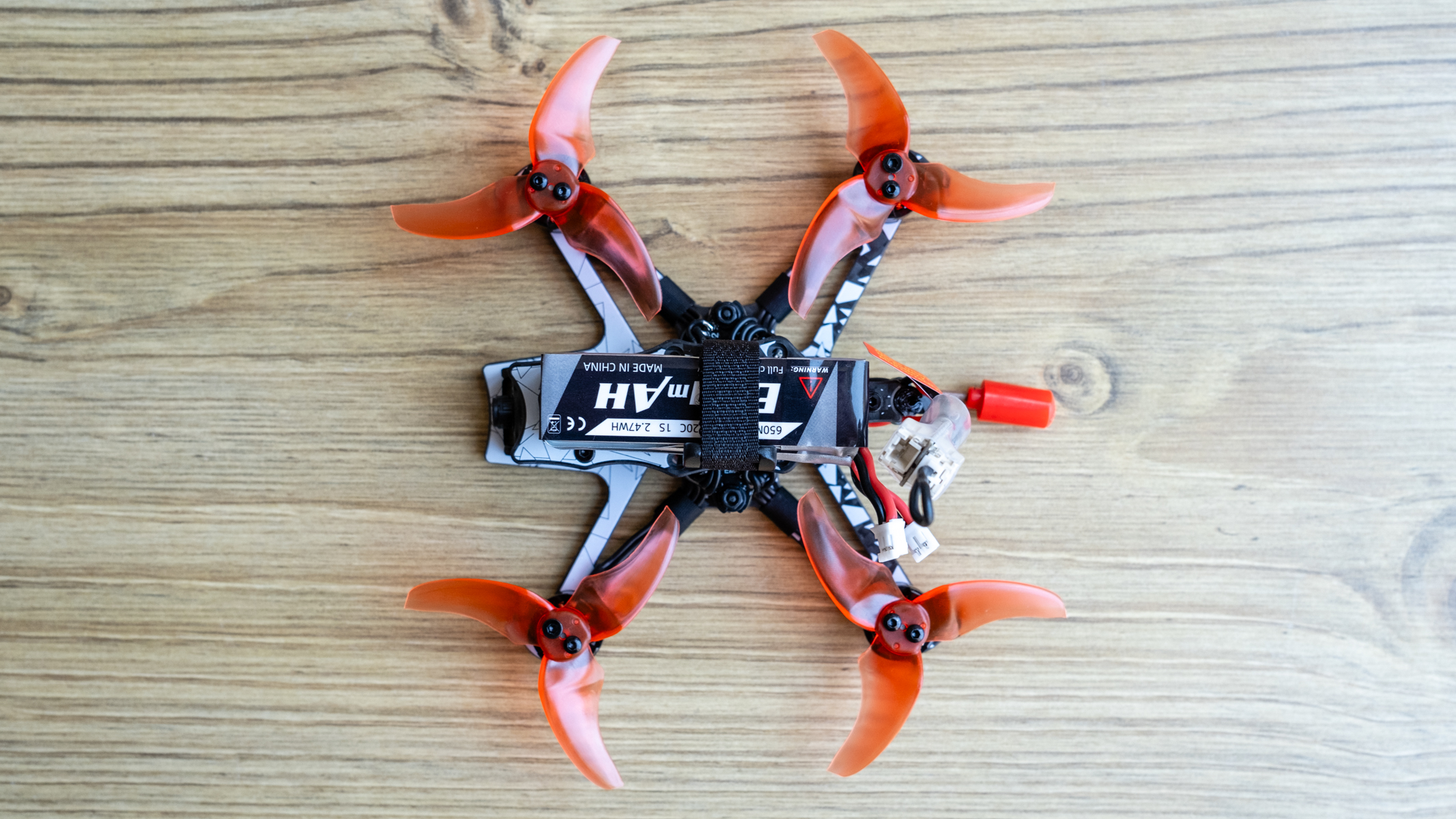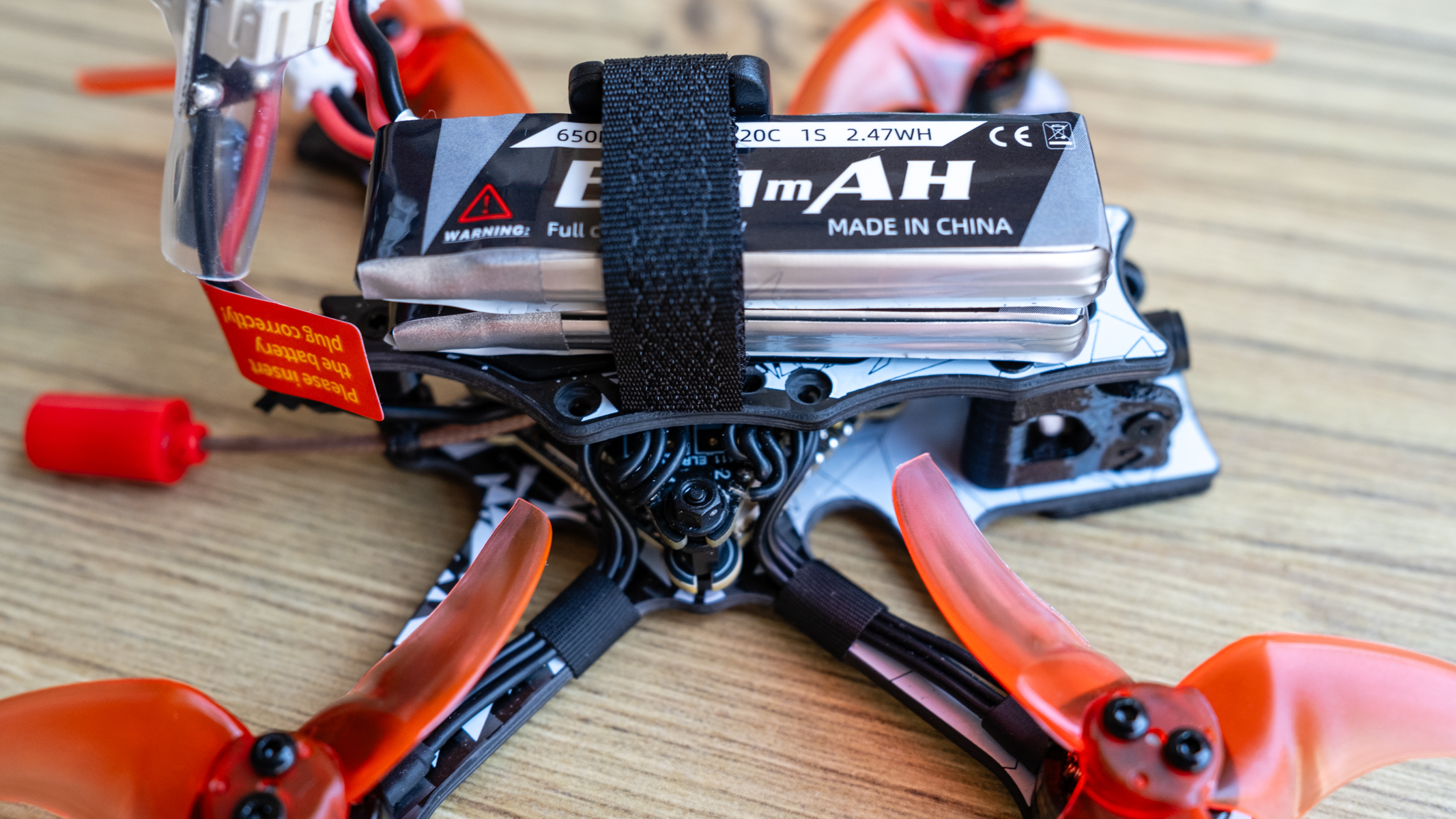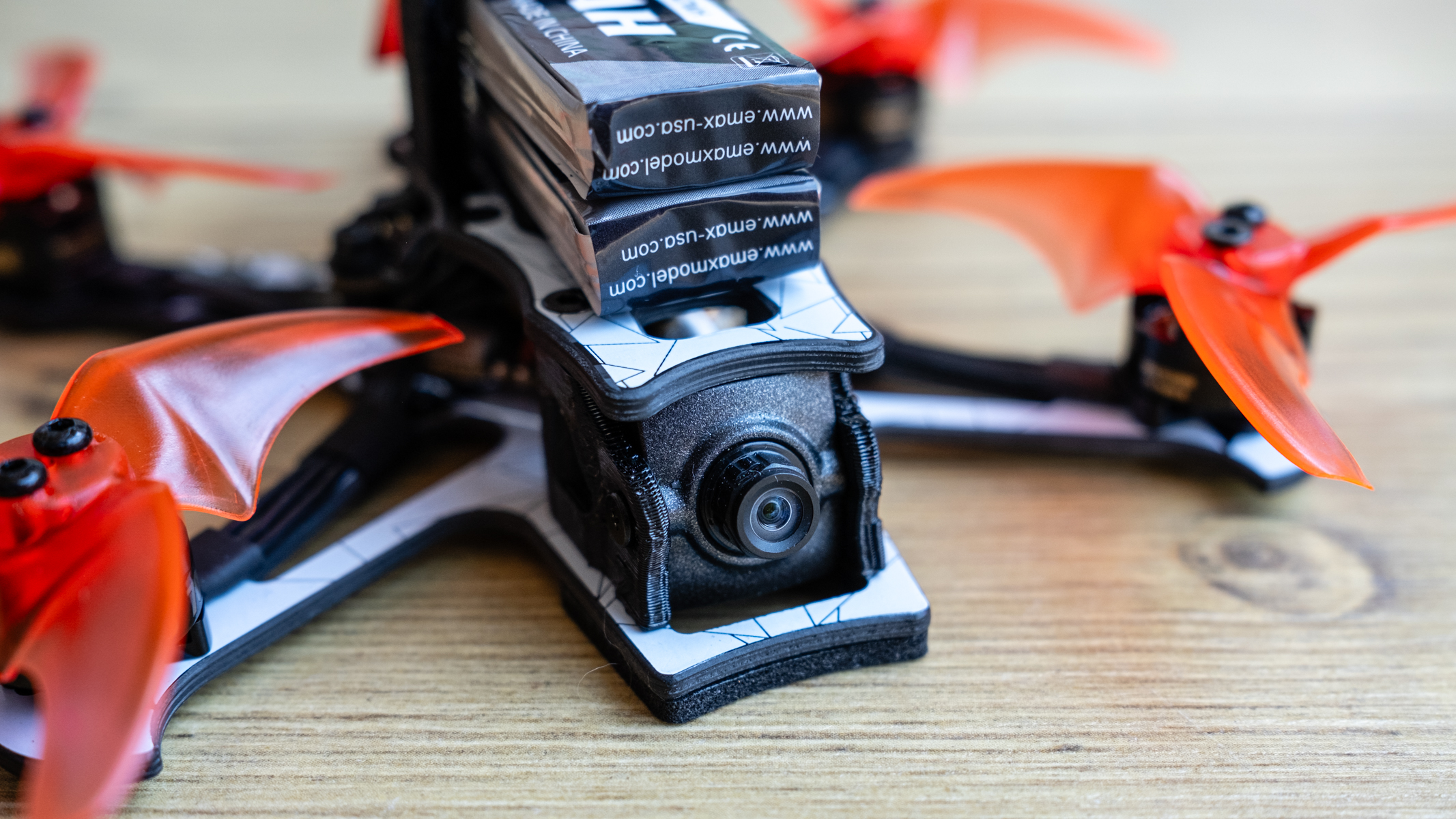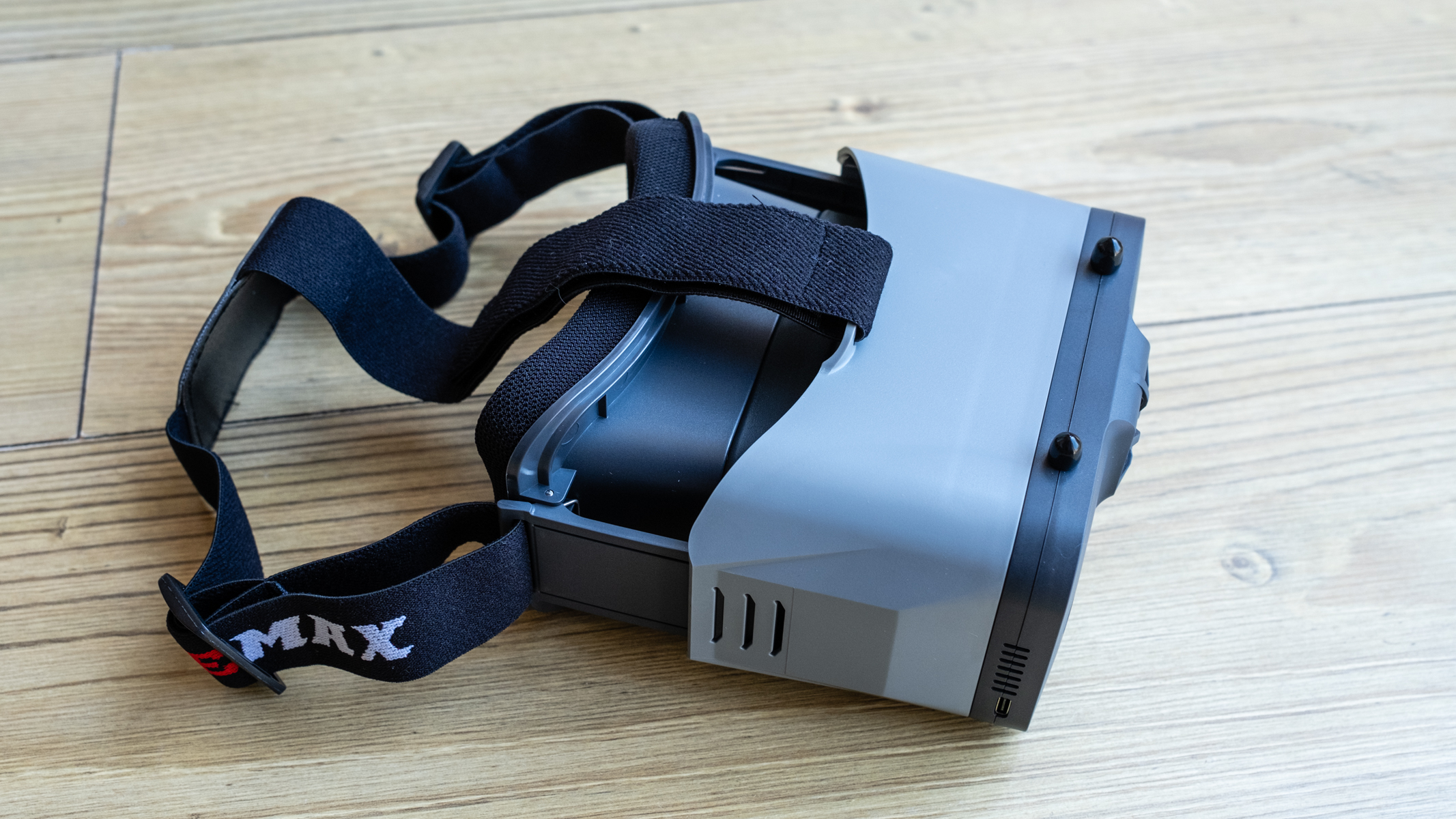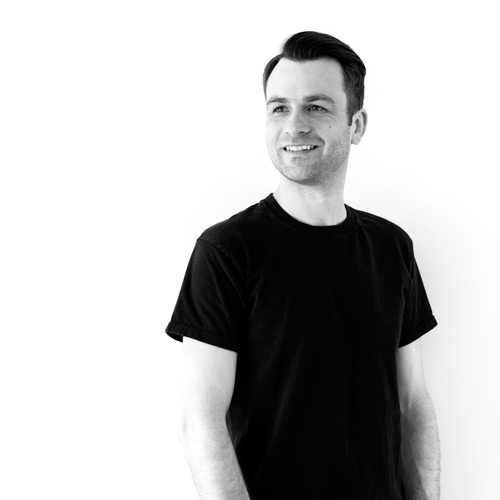Space Verdict
The Emax Tinyhawk III Plus Freestyle RTF Kit is a joy to use, offering beginners a progressive approach to FPV flight. It's tough, lots of fun and it's well-priced for an HD FPV drone kit.
Pros
- +
Great tuning for beginners
- +
HD FPV feed
- +
1S or 2S battery configurations
Cons
- -
Flight requires practice
- -
Goggles not compatible with glasses
- -
No hover functionality
Why you can trust Space.com
It's not often that a Ready to Fly (RTF) kit captures your imagination, but the Emax Tinyhawk III Plus Freestyle Kit raises the bar of FPV drone kits for beginners. This diminutive freestyle FPV drone kit is one of the best FPV drones available, building on the well-respected heritage earned by its two predecessors.
Weight: 2.31 oz / 65.5g (without battery)
Dimensions: 3.94 x 4.09 x 0.87 in / 100 x 104 x 22 mm
Battery: Emax 1S HV 650mAh / up to 4 minutes flight
Charger type: USB HV battery charger for up to six batteries
Modes: Level, Angle, Air (acro)
Video transmission range: N/A up to 200 mw transmission power
Video resolution: VTX feed 720p
Frame rates: DVR captures 720p at 60 FPS
If you're new to FPV (first-person view) drones, you may be wondering what all the fuss is about. Well, just imagine experiencing a sense of acrobatic flight while your feet are firmly and safely on the ground — that pretty much sums it up at the most basic level. However, the main difference between FPV drones and the best camera drones is that alongside the first-person element where you wear goggles, flying these drones, even at a basic level, requires skill.
Once you harness your skills through practicing on a flight simulator and an RTF kit like the Emax Tinyhawk III Plus Freestyle Kit, you can learn how to fly in acro mode, where you can dive, roll, flip and fly the drone through tight gaps and around obstacles. The difficulty comes in the absence of hovering, GPS and other drone technologies. FPV is barebones, but it's a huge amount of fun.
The Emax Tinyhawk III Plus is a mini freestyle FPV drone that's designed to make getting into FPV freestyle as easy as possible. The whole package itself has everything you need to get started, although more batteries are a necessity, all for a price that makes it incredibly accessible. What's more, alongside great flight performance for beginners and intermediate pilots, the drone uses an HD video feed to provide a clear camera view in the goggles.
Emax Tinyhawk III Plus Freestyle RTF Kit Review
Emax Tinyhawk III Plus Freestyle RTF Kit: Design
- Mini freestyle design
- Lightweight and well-built
- Comfortable controller
The Tinyhawk III Plus Freestyle, as the name suggests, is a freestyle FPV drone, which means it's an X shape with the motors and propellers at the end of each arm and the flight controller and other electronics sandwiched in the center of the airframe. The batteries attach to the top of the airframe, secured by a Velcro strap and plug into a wired connector at the back end of the drone.
It's a small and lightweight design with dimensions of just 3.94 x 4.09 x 0.87 in / 100 x 104 x 22 mm, with a weight of 2.31 oz / 65.5g (without batteries). There's no on/off switch, powering on and off is achieved simply by connecting and disconnecting the batteries, just like other traditional FPV drones. It's also extremely tough, but not immune from damage in serious crashes on hard ground such as concrete.
At the front of the drone is the RunCam HDZero Nano Lite Camera with an adjustable angle for changing the pitch of the camera depending on the intended speed of flight. You just have to loosen two hex screws on either side of the camera to adjust its angle. The camera is also recessed behind the bottom of the drone's airframe, which provides a degree of protection in crashes.
Breaking space news, the latest updates on rocket launches, skywatching events and more!
The controller that comes in the kit is the Emax E8 Transmitter, which runs on the ELRS 2.4G protocol and can be used with other ELRS FPV drones. The controller is comfortable to hold, even without a neck strap, with low-profile grips on the back.
The dimensions are 5.91 x 5.51 x 1.77 in / 150 x 140 x 45 mm, and it weighs a modest 9.17 oz / 260 g without a battery. The control sticks/gimbals do not have gimbal protectors, which is a shame, but these can be bought separately if you'd like the peace of mind they provide when transporting the controller.
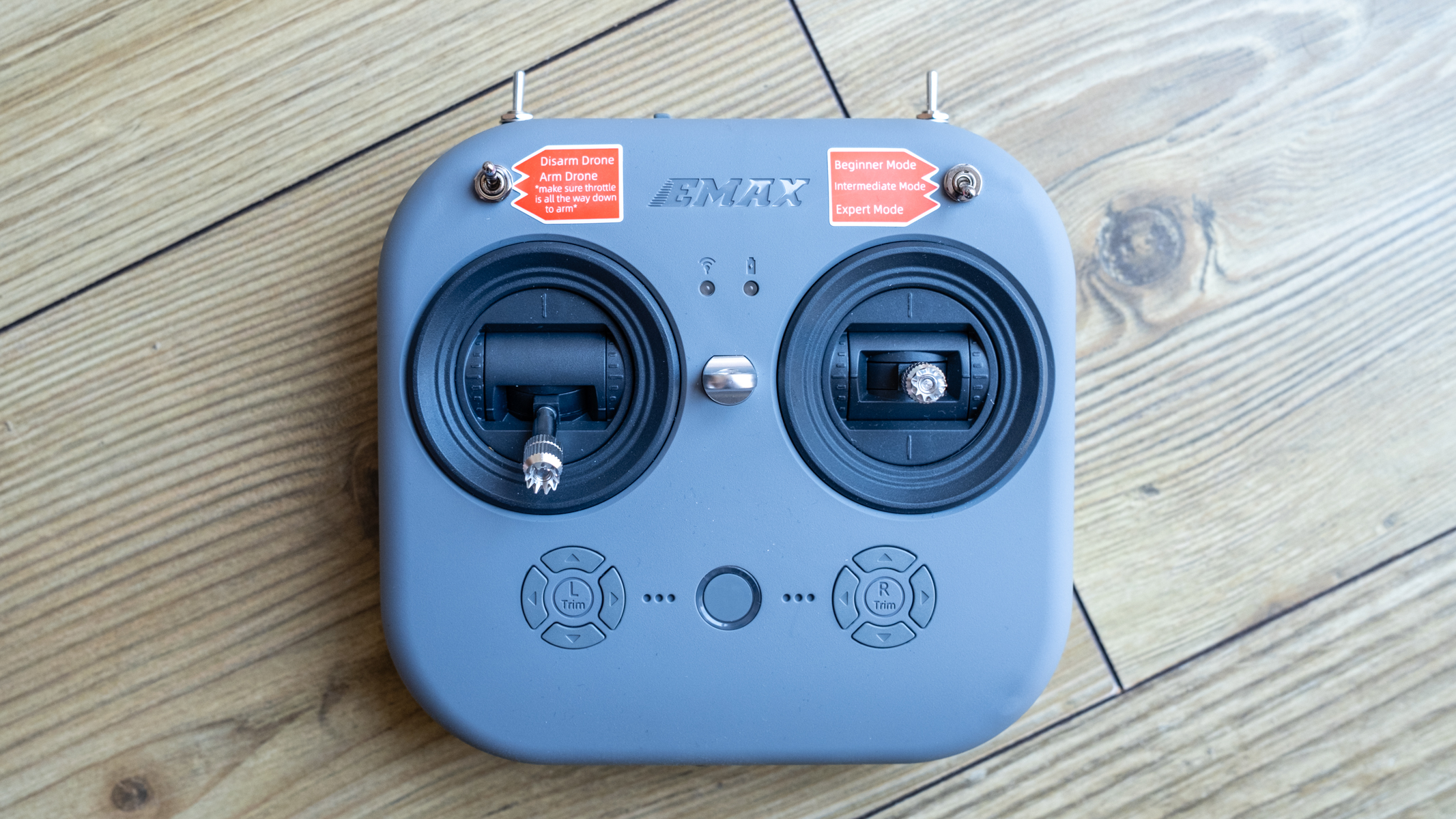

The battery used is a replaceable 18650, which is fantastic because you can carry spares and replace degraded batteries over time, which ultimately extends the working life of the controller. There are eight channels and the power output can be set between 10 and 100 mw. Plus, the controller can also be plugged into computers via the USB-C port to control FPV simulators.
This is an invaluable feature for beginners and is common with FPV controllers; it allows you to hone your skills in a safe digital environment without the fear and risk of damaging your FPV drone in a serious crash.
It's commonly said that you need at least 50 hours of flight to gain even basic FPV flight proficiency, and FPV simulators are a great way to get there alongside providing a practice ground in the colder and wetter winter months, depending on where you live.
Emax Tinyhawk III Plus Freestyle RTF Kit: Functionality
- Dual 1S/2S battery configuration
- Beeper to help find after crashes
- Tough propellers
FPV drones aren't typically feature-packed, and the Tinyhawk III Plus is no exception. It does, however, come with a handful of useful features that are common in the FPV world, but not necessarily common in beginner RTF kits like this one.
Freestyle drones have exposed propellers, unlike micro whoop and cine whoop FPV drones, which have propeller guards. This gives the appearance of vulnerability, which there is to some degree, but the propellers are extremely tough, and a spare set is included in the kit. What's more, replacement sets are inexpensive if and when you need more.
One of the most interesting and, indeed useful features of the Tinyhawk III Pro is that despite being tuned for a 2S battery configuration using two 1S batteries, you can also use just a single 1S battery. In the 1S configuration, an HV plug is included in the kit to complete the circuit. In this setup, the drone is slower and easier to fly, which is ideal when you first start flying FPV.
To get the best out of the Tinyhawk III Plus, you have to run it in the 2S configuration, and with this, you get maximum power from the motors with the ability to fly freestyle and perform aerial stunts. Flight times are typically in the region of 3-4 minutes, but the exact time depends entirely on the aggressiveness of your flying.
Another useful feature is that the drone has a beeper that can be switched on by flicking a dedicated switch on the controller. This is useful for finding the drone in the event of a crash, but you can only hear it from a maximum of a few yards away, and if the batteries disconnect in a crash, it doesn’t work. That said, it remains extremely useful and isn't common with FPV drones at the price level of the Tinyhawk III Plus Freestyle RTF Kit.
Emax Tinyhawk III Plus Freestyle RTF Kit: Performance
- HDZero digital FPV video feed
- 4.5-inch 60Hz TFT goggles
- 1280 x 720 px 60 FPS DVR capture
The Tinyhawk III Plus doesn't capture video like the DJI Avata 2, which can record excellent 4K video and provide an FPV feed from the camera. Instead, the Emax Transporter II HD goggles produce an on-screen image and can capture up to 720p 60 FPS (1280 x 720 px) video.
The FPV feed is recorded using the built-in DVR when a microSD card up to 64GB is inserted. This is configured to auto-record out of the box, which makes life so much easier than having to start and stop recording. The video isn't stabilized, though, so expect it to be shaky and abrupt. This does, in some ways, add to the charm of goggle footage, with all of the goggle information still visible in videos.
The Goggles use the HDZero video system which produces a much clearer image than traditional analogue systems. Although, and this isn't a bad thing, the interference and image break up you typically get with FPV video transmission look quite similar to analog — you see what looks like static and flashes with image break up occurring gradually as you near the maximum transmission distance. Digital systems often look fine one second, and then the image freezes the next or pixelates when close to or at the maximum transmission distance.
These are box goggles with a 4.5-inch 60Hz TFT display that connects magnetically to the body of the box goggles. This allows users to attach the screen to a mini tripod or the controller, with the supplied attachments for use on the controller, if they don't like wearing FPV goggles. This is a great feature for beginners because getting used to wearing goggles is part of the steep learning curve that comes with FPV drones.
The image produced is clear, but like with all box goggles, you can't wear glasses with them, and there are no diopters available to correct the displayed image. As someone who needs reading glasses, the on-screen image was a little blurry, but flying was no problem, and battery levels, etc., were still readable despite their blurriness. People who don't wear glasses wouldn't have this issue.
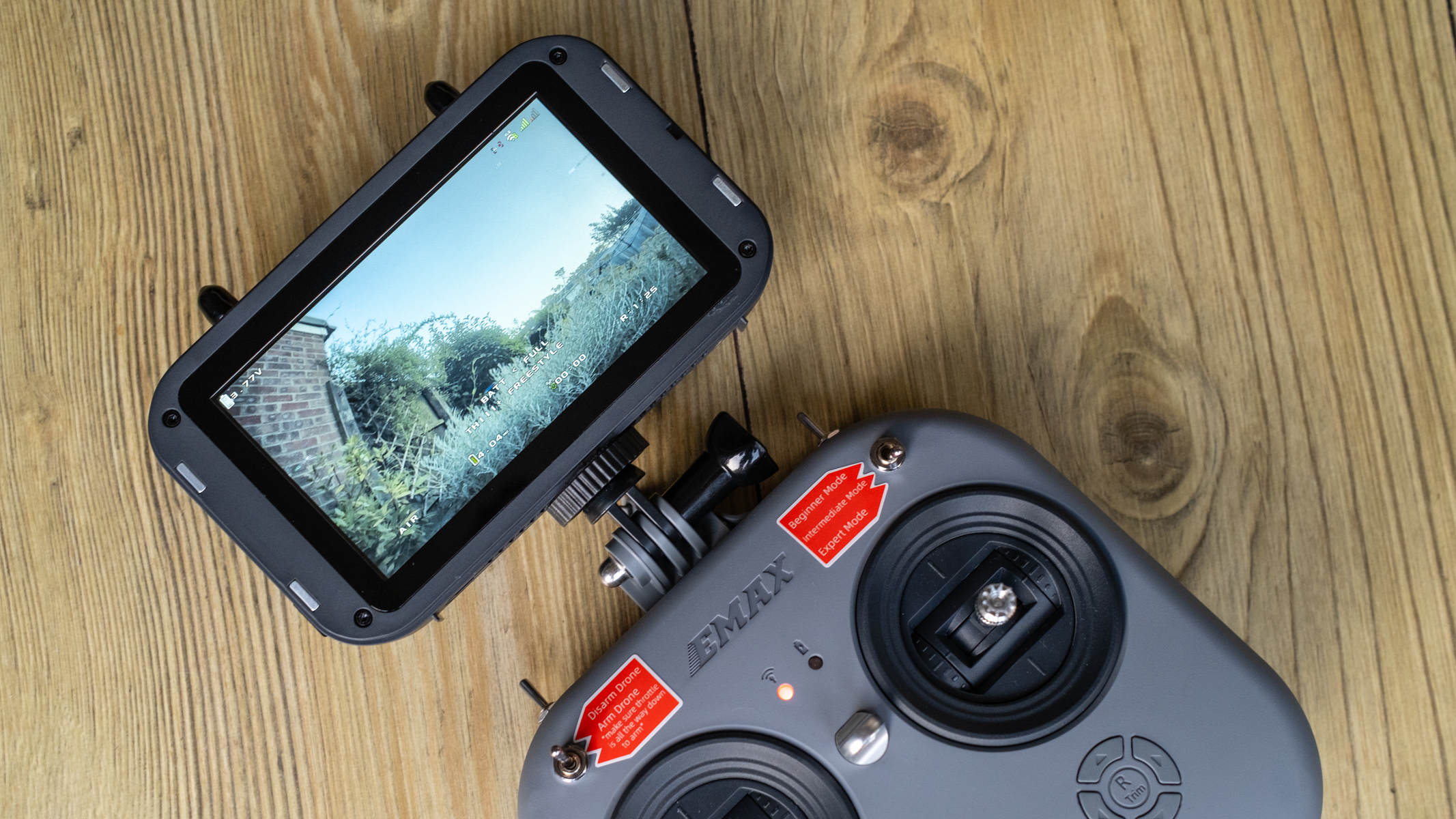
The Transporter II HD goggles feature an integrated 2200 mAh battery, which typically lasts for four flights before it needs to be recharged. And at around 3.5 minutes per flight with some power left in the batteries to suggest that the advertised flight time of up to four minutes is correct, it's not a huge amount of time. However, you can hook up the goggles to a USB power bank and charge while using them.
During testing, the screen detached from the box goggles and landed on the concrete which scratched the screen. This was, admittedly, my fault because I was wearing them on my forehead and looked down to adjust the drone on the ground before take-off. The scratches, fortunately, don't have any detrimental effect when using the screen or goggles, but it was a reminder that we needed to be mindful of the magnetic screen attachment when using them.
Emax Tinyhawk III Plus Freestyle RTF Kit: Cost
The Emax Tinyhawk III Plus Ready to Fly Kit comes with everything you need to get started including the drone, Transporter 2 HD FPV Goggles, E8 Transmitter, Two 1S batteries, two sets of propellers, a six-port USB battery charger and other accessories. This all costs $691 / £496, which is understandable considering the VTX (FPV feed) is digital rather than analog.
With only two batteries in the kit, it's well worth buying several extras, but at the time of writing the 1S 650 mAh HV batteries that the Tinyhawk III uses are unavailable on the Emax USA website. You can, however, pick them up on Amazon and from independent FPV retailers. Prices vary so shop around, although buying directly from Emax is the most cost-effective option when available.
Should you buy the Emax Tinyhawk III Plus Freestyle RTF Kit?
In a nutshell, yes, if you're new to FPV or even if you're a more experienced pilot looking for a small freestyle drone that's incredibly quick and easy to get into the air. The 1S battery configuration provides a somewhat pedestrian flight experience that's perfect for beginners, but plug in two 1S batteries for the 2S set-up and you unleash the full potential of this mini freestyle drone.
The drone and controls are fine-tuned for the 2S battery configuration, but they work well either way. The controls are responsive but undoubtedly set with the beginner and learning FPV pilot in mind. More experienced pilots can hook the Tinyhawk III Plus up to the free Betaflight software to customize the tuning to their liking.
If the Emax Tinyhawk III Plus Freestyle RTF Kit isn't for you
There are many options when it comes to FPV drones, but if you'd like to keep things as simple as possible in terms of flight while enjoying many of the features of camera drones, the DJI Avata 2 is ideal. This FPV drone offers GPS positioning, Return to Home, excellent 4K video capture and intuitive control using the Motion Controller. It can also be flown like a traditional FPV drone.
If you'd prefer a micro whoop FPV drone kit, which features built-in propeller guards and even has an extremely basic hover function, the Beta FPV Cetus X is a 2S analog FPV drone that's great for beginners. This model is just as much fun as the Tinyhawk III Plus, but thanks to the propeller guards, it can also be flown safely indoors.
Alternatively, if you prefer the easiest-to-fly traditional FPV drone and one that's even suitable for children, check out the BetaFPV Cetus Lite. This drone hovers and is suitable for indoor flight only due to its low power, but it's a great way to get used to using FPV goggles for an incredibly low cost.
James is an award-winning freelance landscape and portrait photographer, as well as a highly experienced photography journalist working with some of the best photography magazines and websites with a worldwide audience. He’s also the author of The Digital Darkroom: The Definitive Guide to Photo Editing. www.jamesaphoto.co.uk

